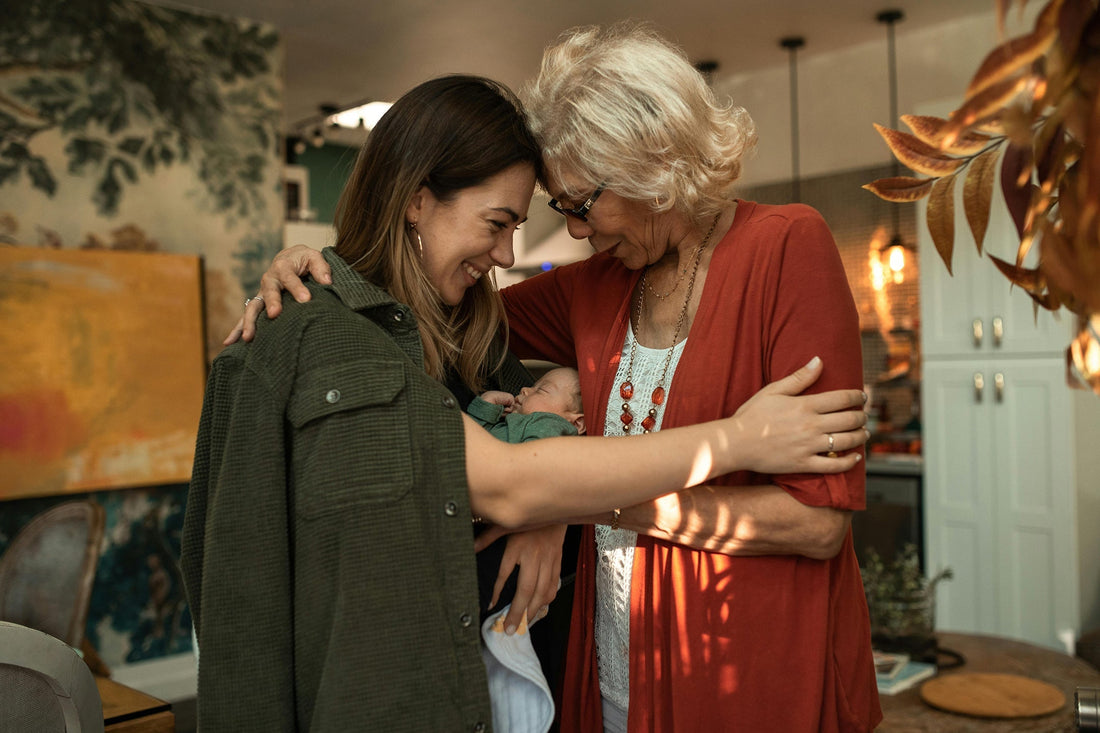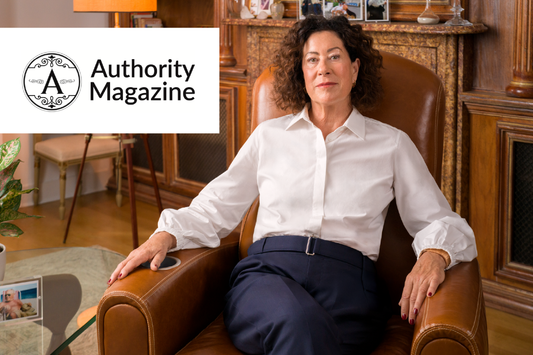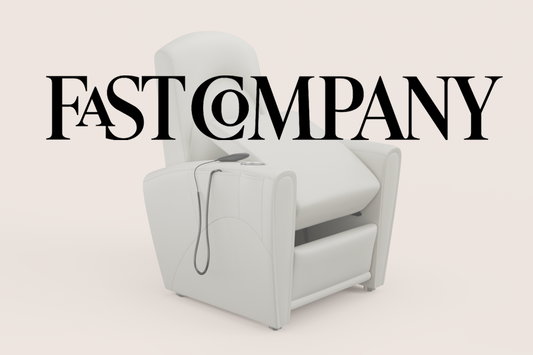Midlife Caregiving: Finding Our Way Without a Map

By Guest Author: Leah Weiss, PhD
In my inaugural post launching The Midlife Curriculum, I promised conversations that go beyond hormones and financial planning to address what actually keeps us up at night. Today, I'm diving into one of midlife's universal challenges: caregiving for aging parents while simultaneously raising children, maintaining careers, and preserving our own health.
"It is just precautionary," my surgeon sister reassures me when I finally reach her around 8 p.m. Our mother is in the ER after a cardiac event during a routine procedure—the culmination of a day that had spiraled from ordinary to emergency in hours. "If it wasn't precautionary, they wouldn't have let you drive her there. They would have called the ambulance."
My mom, ever pragmatic at 82, pointed out that someday, one of these cardiac events will end differently.
I'm sharing this not because my experience is unique, but precisely because it isn't. This moment—suspended between emergency and routine, between crisis and normalcy—captures the essence of midlife caregiving.
How do we navigate these waters without drowning ourselves?
We're suspended between emergency and routine, between crisis and normalcy—this is the essence of midlife caregiving.
The Tension Between Caregiving and Maintaining Routine
It's hard to know when to pull the ripcord in an emergency. Keeping normalcy and healthy routines for kids, work responsibilities, and ourselves is important. But being there for a loved one in crisis is equally (if not more) vital.
Years ago, when I had a tumor removed, my husband stayed home with our three children, all under five at the time. I remember getting to pre-op and realizing I was going through this alone. Many people were surrounded by family; I was not.
At first, I felt sorry for myself. Then I joked with myself (as one does)—"Hey, gotta do what you gotta do to get a minute alone with three little kids at home, am I right?" But eventually, I realized this experience was a real-life test of something my decades of Buddhist practice had been preparing me for: that ultimately, we all end up alone with our bodies, hearts, and minds in life's transitions.
On the other hand, it's also easy to be too pragmatic.
For my mom's planned procedure Monday morning, I initially thought I'd let her take an Uber, figuring I'd pick her up afterward. But as the morning came, I realized I could be there and decided to drive her. As we crossed the bridge, my mind raced to all I had to do that day. Then, I kept returning to the idea that taking her and being present in her anxiety was a complete action in itself—worthy of my full attention.
But then I dropped her off—and didn't come in. Part of me says that was stingy. Part of me says it was balanced.
How can we ever identify what is enough? We can’t know the outcomes so we have to make our decisions with imperfect information. How can we ever know what is "enough" when the very nature of caregiving blurs all boundaries?
The Inadequacy of the "Sandwich Generation" Metaphor
The idea of a sandwich generation is really not a helpful metaphor. Unless we're talking about a shit sandwich.
But then again, is it a shit sandwich?
Caring for all these people—my children, my mom, my two dogs, and a guinea pig—is exactly what I signed up for. It was my whole plan—to apply the bodhisattva principle of wisdom inseparable from compassion, to be an ordinary yogi, learning through the ordinary world. (Don't judge me for being so insufferable; I was younger and much more grandiose when I set all of this in motion.)
According to the Pew Research Center, nearly half (47%) of adults in their 40s and 50s have a parent age 65 or older while simultaneously raising a young child or financially supporting a grown child. This population has grown dramatically as people live longer and have children later in life.
We invited my mom to move to Portland two years ago so we could care for her. Because I want her to be loved, cared for, and not feel alone or like a burden. But also for us. For our children. To benefit from her wisdom and the tactical support she offers in spades.
Our kids have regular nightmares about her dying. They love her and are scared to lose her. But we're learning so much from her, and without this closeness, we wouldn't get that experience.
Even one day—hopefully a very long time from now—when we lose her, it will have been worth it.
So no, it isn't a shit sandwich. And it doesn't feel like a sacred sandwich either, most days, if I'm being honest. Maybe it isn't a sandwich at all. Perhaps what I'm reaching for is an image that captures mutual support and interdependence—where everyone both gives and receives care simultaneously.
Caring for all these people isn't a shit sandwich—it's exactly what I signed up for.
Mortality, Self-Care, and "What Is Enough?"
From the perspective of Buddhist psychology, piercing the veil of invincibility is the price of admission to wisdom. The fear of losing someone you love helps us understand what it means to be human and prioritize what really matters.
I co-developed and was a faculty member with the Compassion Cultivation teacher training program at Stanford, and many of our most insightful trainees worked in hospice. They described caregiving as a gift. As holy. As the highest form of practice.
However, the purposefulness of caregiving can turn into unmitigated self-sacrifice. Despite (or perhaps because of) the spiritual framing of caregiving as sacred, the practical reality reveals a profound inequity in who performs this "sacred" work—and at what cost.
This burden falls disproportionately on women. Research reveals that women provide 60% of family caregiving, spend 50% more time caregiving than men, and are more likely to handle the most intensive care tasks.
"Caregivers often die first," I remind my patients who are caring for chronically ill family members. Which is why the question of enough matters so much.
A landmark study found that caregivers experiencing strain had a 63% higher mortality risk than non-caregivers. The very people dedicating their lives to caring for others are, by omitting to maintain their own health day after day, putting their lives at significant risk.
This points to the importance of the played out yet apt oxygen mask analogy and the unpredictability of death. We do not get an invitation, and we do not get to RSVP.
The fear of losing someone we love helps us understand what it means to be human and prioritize what truly matters.
The Social Calculus of Caregiving
These caregiving responsibilities radically reshape our social lives.
Every social invitation now comes with a silent assessment: Do I have the bandwidth for this? What if mom needs me? What if I am in couch lock and can't get myself out the door?
I find myself cultivating fewer but deeper friendships—people who understand when I text "ER with mom" and respond with "need anything?" instead of taking it personally. People who don't keep score when I've canceled three times but show up when I finally can. And they know they can expect the same from me.
In my next post, I'll dive deeper into the profound need for connection amid the very real constraints that midlife caregiving imposes on our social lives. How do we stay connected when life is unpredictable? Next week, I'll explore practical strategies for building a support system that works in the midst of caregiving's relentless demands.
Finding Our Way in the Middle
We talk about midlife as though we are in the middle. But we may be at 11/12ths of our life or 47/48ths. We don't know. We can't know.
There's no perfect formula for balancing caregiving with self-care, no definitive answer to "what is enough?"
But maybe that's the point. Maybe enough isn't a fixed quantity—it's a moving target. A daily recalibration.
The truth is we're making it up as we go, recalibrating what "enough" looks like day by day. Sometimes we'll get it wrong. Sometimes the calculus will feel impossible. But perhaps that's precisely the point—this uncertain terrain, with all its complexity, is why the curriculum of midlife is not a 101 course. There is no map for the territory we're navigating. While the "sandwich generation" metaphor fails us, so too does any neat framing that tries to contain this experience.
And if that's true, then the most we can do is show up, with whatever we have, and trust that it matters.
This uncertain terrain—not some imagined future state—is precisely where the most important learning happens.
The Grandma Principle
Before posting this, I invited my mom to read a draft. She told me she remembers feeling the weight of these same questions when my sister and I were young, she was working, and her parents were aging.
Her one regret? That she always put herself last—especially her physical needs.
Which is why she's so adamant (sometimes to the point where I have to invite her to give it a rest) that my sister and I take care of ourselves. And now, with her living down the street, I actually can.
Because of her, there are multiple times a week I can carve out a few hours to exercise, rest, or just breathe in a way I couldn't have before. She steps in for school pickups, hangs with the kids, keeps things moving.
The Grandma Principle lives on.
But I also know that not everyone has a mom nearby—there were many years when I didn't. If that's the case, we need to find support where we can. Some parents make swaps with partners, trade off with friends, or tap into other creative solutions. It doesn't always look perfect, but it can be enough.
Caregiving doesn't have to be a one-way street. Support can flow in both directions—if we let it. And if family isn't an option, we build the village in whatever way we can.
So I'm curious—who or what makes it possible for you to step away when you need to? And if you don't have that support right now, what small step could you take to start building it?
About Dr. Leah Weiss
Therapist, author, and Stanford lecturer exploring midlife fulfillment through "The Midlife Curriculum" newsletter. Drawing on her Stanford background in compassionate leadership and executive coaching, Dr. Weiss helps individuals navigate life's pivotal moments with evidence-based strategies. Author of the acclaimed book "How We Work," translated into 10 languages and featured by major media outlets worldwide. Find her on Substack at phdl.substack.com or at drleahweisstherapy.com

